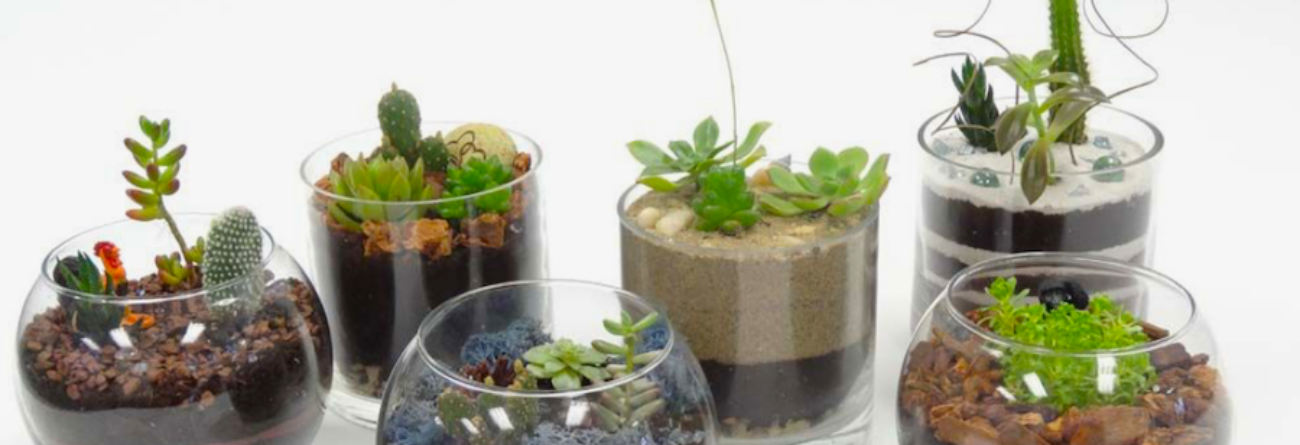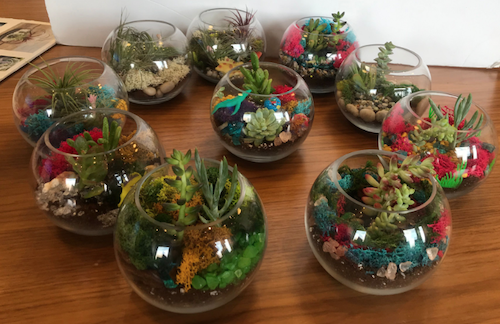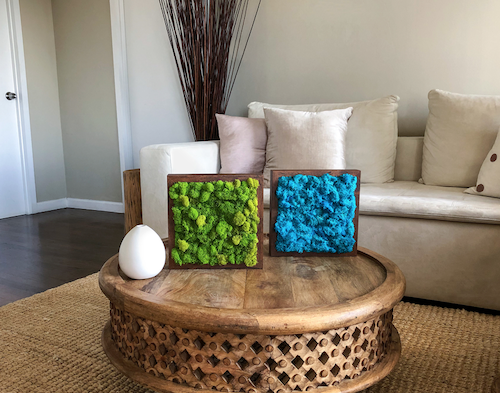
Six Helpful Houseplants for a Healthier Home
One of the easiest ways to liven up your home? Add a few houseplants. Houseplants can complement any size space, and there are quite a few low-maintenance varieties. More importantly, houseplants can make your home healthier. Their uplifting color splashes keep us centered and lower our stress, with many species shown to improve air quality by reducing volatile organic compounds (VOCs). To learn more about the power of plants and gather recommendations, The Related Life reached out Liza Fiorentinos, founder of Luludi Living Art, New York's go-to interior plant designer. Luludi Living Art specializes in creating living sculptures with easy-to-care-for plants, including terrariums and moss walls.
In the past few years a newfound appreciation for houseplants has emerged. Now, with Earth Day around the corner, what better way to show appreciation than adding a few plants to your home? Keep reading for Liza's top recommendations for low-maintenance, helpful houseplants.
"The following are our faves because they help detoxify the air by neutralizing toxins against Formaldehyde found in carpets, plywood, furniture and against Benzene found in paints, glues, and detergents," Liza says. Check them out below.
Pothos
With its trailing green tendrils and heart-shaped leaves, Pothos is one of the most popular houseplants and a great choice for novice growers. It's very easy to grow and maintain, as it does well in both high and low light. It can also survive for long periods without water. Liza recommends Golden Pothos, with its pretty dappled leaves.
Peace Lily
Peace Lily was one of the top 10 detoxifiers listed by NASA in a study of the effects of houseplants on indoor air quality. These tropical, deeply green plants produce dramatic white blooms. They prefer low light and need to be watered weekly.
Snake Plant
They don't look like snakes at all, but rather, grow up to 8 ft. tall with spindly sword-shaped leaves. They prefer indirect light and don't need frequent watering -- only water when soil is dry. One of the few plants that convert carbon dioxide to oxygen at night, they're a perfect choice to promote healthy airflow in your bedroom. But please be aware, Snake Plants are toxic to pets.
Fiddle Leaf Fig
This indoor tree is a great choice for noise absorption, thanks to its large leaves. It hails from the lowland rainforest of West Africa. Now popular with interior designers for its prehistoric feel, the Fiddle Leaf Fig grows beautiful, veined leaves shaped like, well, fiddles. They prefer indirect light and don't need frequent watering, but don't do well in cold weather conditions.
Aloe Vera
You've probably heard some of the benefits of Aloe Vera, but did you know it absorbs carbon monoxide? These plants are also quite forgiving and prefer to be left alone. Keep them in bright, indirect light, but not near a heat source. Do not overwater these; let the soil dry out between watering. Once per month, you should wipe the leaves with a damp cloth to clear dust.
Ferns
Liza recommends the Boston Fern for its ability to relieve body stress – it acts as a natural humidifier that makes air easier to breathe. This nontoxic fern, with its long branches of fringed leaves, needs lots of humidity. Its soil should be kept moist, and you may want to mist the plant once per week.
Terrarium Design
In celebration of Earth Day, The Related Life is hosting a terrarium-making event this month for our New York residents. Residents will learn about recycling alternatives and create their very own recyclable planter with a Mini Living World, featuring an assortment of plants, moss, pebbles, and rocks. Terrarium-making has grown in popularity in recent years.
"Designing, creating, and building your own Terrarium is such a calming meditative experience. We are all nature deprived and so any exposure to soil, plants and the natural world helps balance our bodies and mind. The process is super simple and at the end you have a beautiful mini living world for your space," says Liza.
Moss Walls
Another trend gaining steam in plant design? Moss walls. You can find them decorating homes and corporate offices alike. They're known to reduce stress levels, improve productivity, reduce noise, and lower energy costs of a space.
"Moss Wall Gardens can be created in any size – even in a small picture frame,” says Liza. "At Luludi, we design them with natural preserved moss (so it's a no-maintenance element), and we try to incorporate other biophilic elements, such as twigs, to give more dimension. They are a beautiful addition to any room and bring the benefits of nature inside."
We hope you enjoyed this roundup on the power of plants. Your next helpful houseplant is waiting!
The Related Life is written and produced by the Related Life Editorial Team. Be sure to follow us on Facebook and Instagram for the latest events, news and announcements in your area, and tag us for a chance to be featured @therelatedlife and #therelatedlife.

